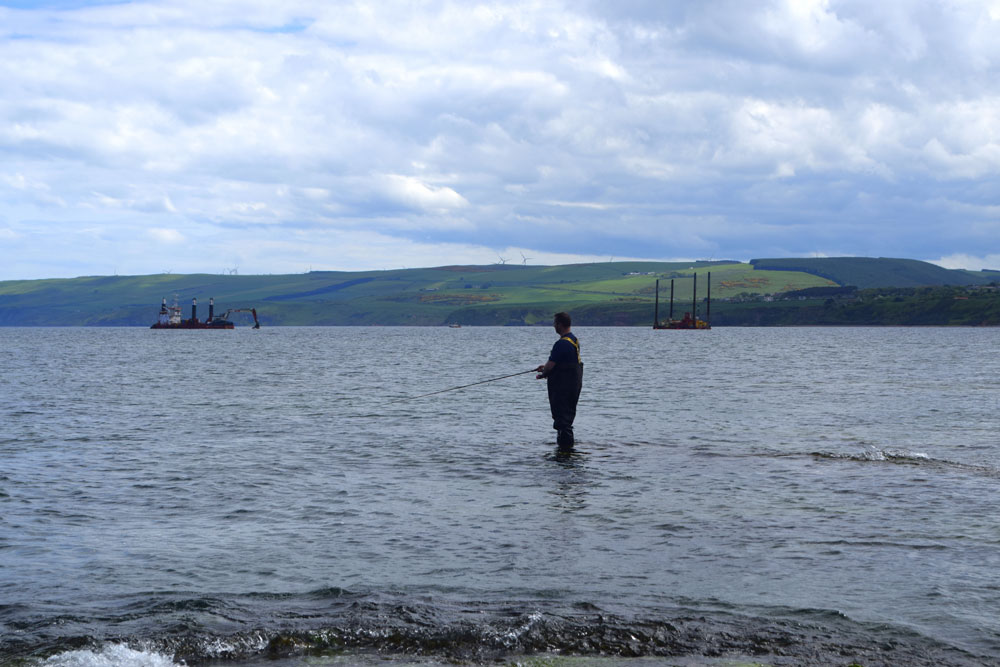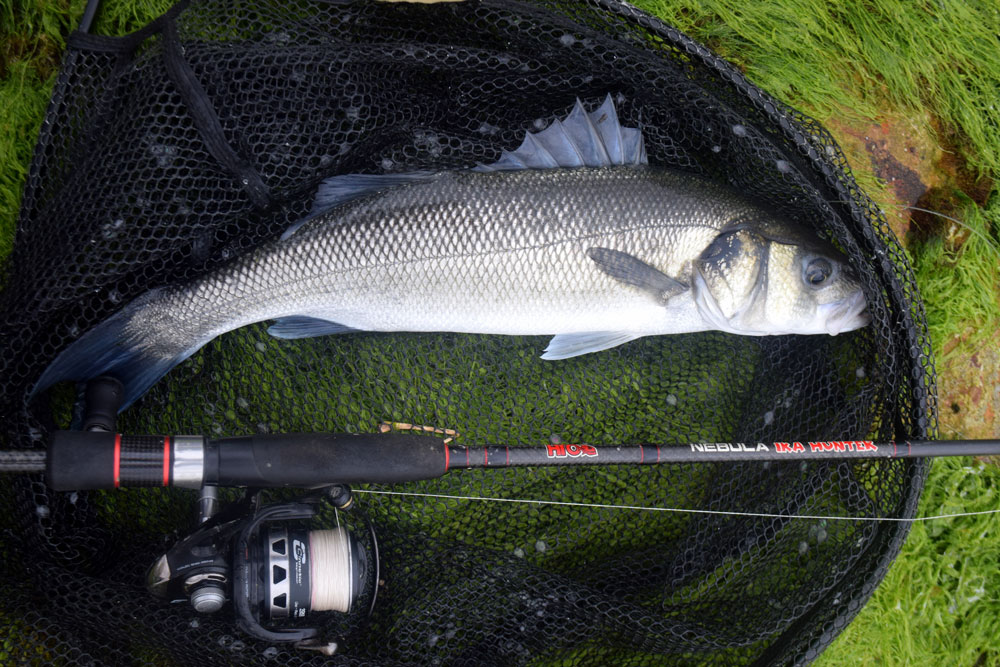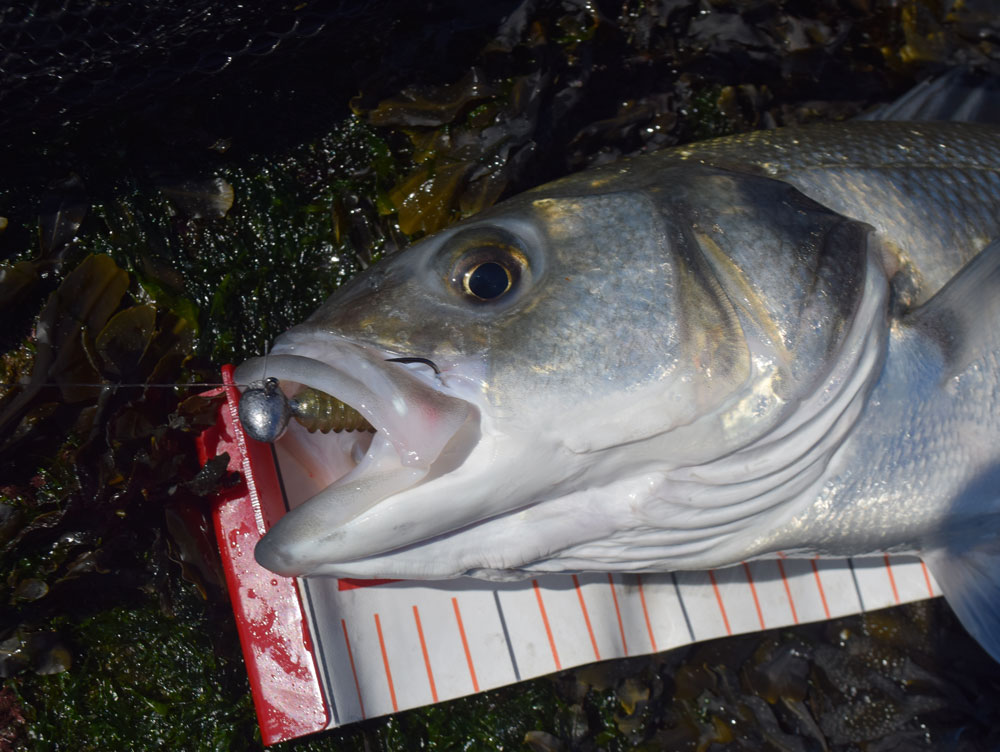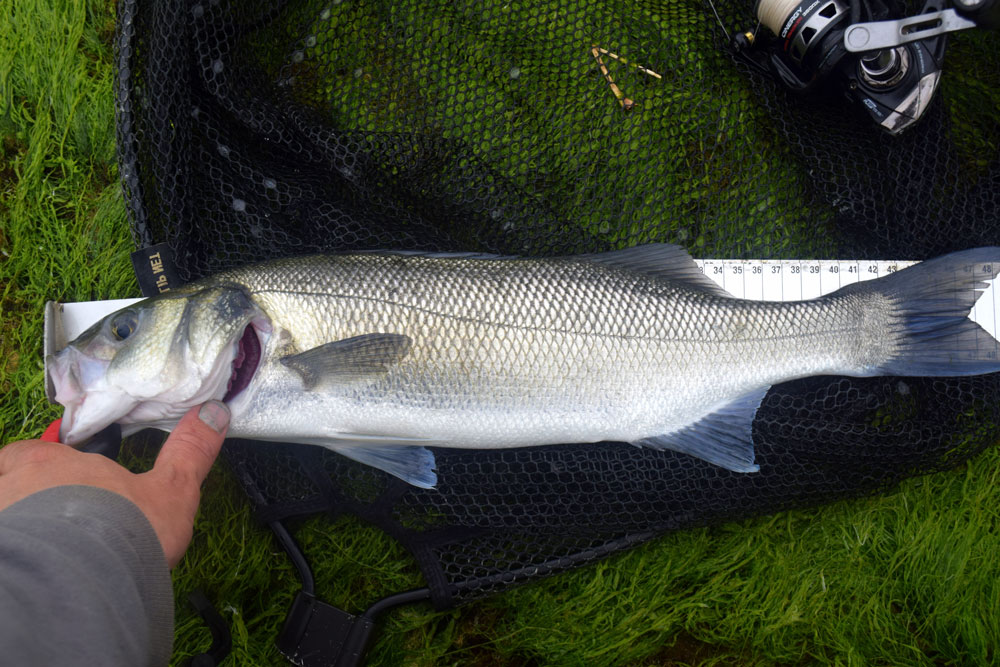Every year without fail, I get a dose of bass fever. During this period, my attention switches primarily to those silver brutes as I stalk my local marks cashing in on the summer sport. Throughout the years, my tactics have evolved to a point where I now seem to carry even fewer lures than when I am LRFing.
Firstly, my bass fishing is limited on the east coast of Scotland, and indeed there are only a couple of well-known marks that consistently produce bass. My Scottish bass fishing tactics have evolved to make the most of these marks. The venues that I fish have two major things in common – strong currents and rocky reefs. The water is not that deep, maybe 25ft at its deepest, shallowing up to about five feet. I can fish this part of the shore throughout the tidal range. At low water, I rely on the channel where the water flows, and as the tide rises to cover the reef, my attention gets focused there.
Fishing Strong Current Flows
Let's talk about the areas where the strong current flows. My tactics apply to tide rips, estuaries and other areas of strong flow. As I have been fishing here for years, my knowledge of the likely holding areas is very strong, but basic watercraft can lead me to find some brilliant sport.
So, where to find bass in these flowing water situations? The answer is the same as most fish, utilising the eddies and creases the flowing water creates. Just like trout in a river, bass will patrol areas where current meets slack water, and these creases are a great place to target. They are easily seen on the surface, giving you a great start.
Bass like to use structure to help them hold station in a flow. Large rocks and boulders create a slacker area of water behind them as it flows over the obstacle, and again there will be bass lurking in this area, waiting to take advantage of anything being washed by. These areas appear on the surface by giving a tell-tale boil or eddies in the flow.
Targeting these areas can be a great way of getting in amongst the spiky silver beasts. With the tide at low, most of the bass coming inshore to hunt will use this channel with the flow to get at the inshore prey items they desire. As the tide floods, the water rises over the edge of the channel and begins to flood the reef. The bass is one of the first fish on the scene and will hunt in shallow water to get at the prey items that emerge from the rock pools and boulders as the tide floods. Using a good understanding of bass habits means you can exclusively tailor your approach to get consistent results.

Tackle and Tactics
My dedicated bass tackle consists of the HTO Nebula IKA Hunter – 2.65m rod – you can read more about my bass fishing with this rod here. This rod is primarily designed for squid fishing but will happily cast lures in the 7 – 30g range. The rod gives me a couple of major advantages over more traditional bass rods.
Firstly, it has a fast action which is great for imparting action into lures, whether twitch baits, walk the dog lures or soft baits. This fast action, coupled with a very light rod in hand, means you can work lures all day long with little fatigue. It is also very sensitive as most squid bites are subtle. This sensitivity gives me a massive edge, especially when using finesse tactics and fishing soft baits. Bouncing a lure over the seabed and feeling for snags and weeds not only catches lots of fish but also keeps tackle losses to a minimum. This is because I can feel snags before I wind too deeply into them and because I can feel the snags, I can use the sensitivity to take evasive action and save my lure from the rocks and kelp.

Being a squid rod, it has a progressive playing action that makes playing the fish fun and helps cushion the hook hold. As I use braid, which has virtually no stretch, I need the rod to soak up head shakes and lunges from a hooked bass, and because of this, I rarely lose fish once hooked. It allows me to put a good bend in the rod, which controls the fish and gets it safely into my eager hands for its beauty shot. It compresses well on the cast, helping achieve long distances, but recovers so quickly you would never know it had a progressive playing action until a fish is hooked. Because of these features, it has become my dedicated bass rod.
I couple the rod with a 3000 size front drag fixed spool reel loaded with PE0.2 HTO Nebula X8 Braid. Braid offers me the advantage of high strength to low diameter, resulting in longer casts and a stronger line. I use a 6-foot length of HTO Nebula FC Fluorocarbon leader, usually around 20lb breaking strain. This leader acts as a rubbing leader protecting the braid from the barnacle-covered reef. It also makes your rig less visible to the fish.
Now onto lures. The one lure that I rely on year after year is the HTO Schlugg. I developed this lure primarily for my bass fishing, and it works time and time again throughout the tide. I designed this lure to mimic a sand eel or a small bait fish. The ball tail gives it great stability on the cast, giving you a bit of extra distance. The ball tail has a high-pitched wiggle on a straight retrieve like a fleeing sand eel. However, I very rarely use a straight retrieve when I am bassing. Instead, I utilise the areas of current I highlighted earlier.

I rig the Schlugg on a 10g 2/0 jig head, my favourite being a football (rugby) style jighead (check out our HTO Range of Jig Heads here). This jighead style will allow you to let the lure stand up on the seabed. This, just like the ned rig in freshwater, can be a deadly method, especially for the lazier bigger fish – you can see how I rig the Schlugg in the video below.
My standard tactic when using the Schlugg in current is to cast “upstream” and allow it to fall on a tight line. As the current pushes the lure downstream, I follow the lure with the rod, winding slowly to keep pace with the lure. This is where the great sensitivity of my bass rod is important, as I allow the lure to just touch the seabed before a couple of jigs keeps the lure working just above the seabed. Feeling the lure just touch the bottom before jigging it up keeps me mostly snag-free. This action is continued until the lure is swinging around downstream from me, then gently jigged back.
Most of the takes are as the lure is on a controlled fall. You get some very confident takes as the bass take what they think is a dying sandeel, and they wolf it down.
As the tide floods, I begin to fish the reef, concentrating on the edges of the channel where it floods over the reef. The bass often uses this edge as cover to break out across the reef, searching through the former rock pools. The current is much less over the reef, and here just a simple slow jigging technique will get those bites going.
I have ultimate confidence in the Schlugg to persuade bass to bite, and time after time, it never lets me down. I urge you to try it!



